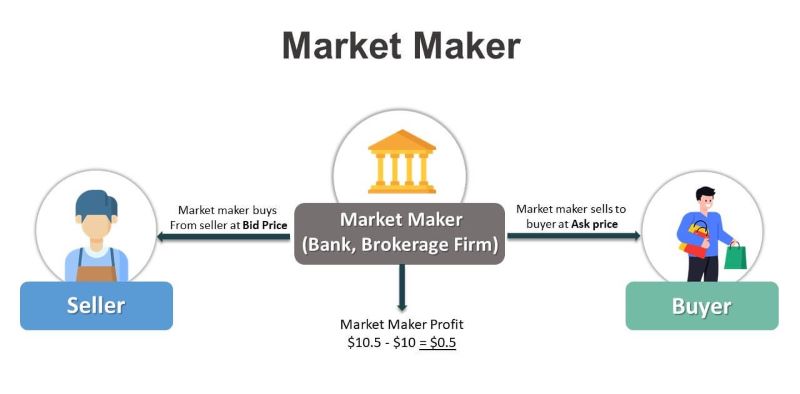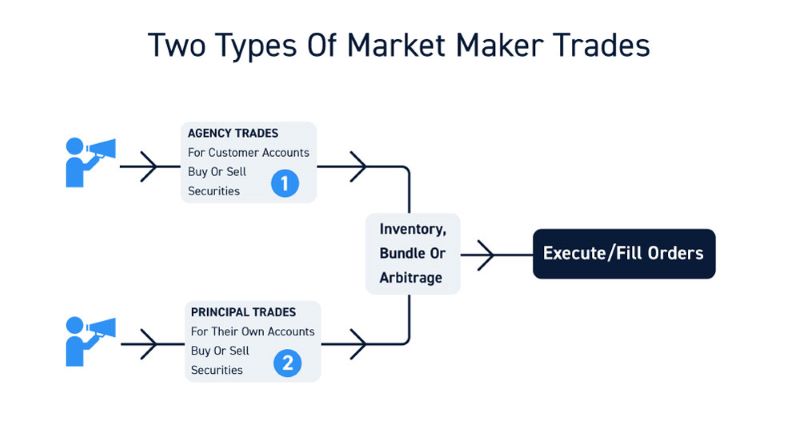Exploring DLT in Blockchain: Navigating the Tech of Tomorrow
Ever asked yourself what is DLT in blockchain? Well, it’s the backbone of today’s crypto world. It’s a tech force you can’t ignore. We’ll dive in and tear down what makes DLT tick – the nuts and bolts that could shape our digital future. I’ll guide you through the basics, reveal its top uses, and unpack the technical stuff. Let’s gear up to spot trends and tackle challenges ahead. It’s a thrilling tech journey, and I’m your expert guide. Stick around; let’s decode DLT together!
Understanding the Fundamentals of DLT in Blockchain
DLT Technology Explained
Let’s start simple. DLT stands for Distributed Ledger Technology. In plain words, it’s a way to record details across many places at once. Unlike old ledgers, DLT doesn’t keep data in one spot. It spreads it out across a network. This means everyone can see the data and nobody owns it alone.
Now, why do we talk about DLT in blockchain? Blockchain is a kind of DLT. It’s like saying a rose is a type of flower. So, blockchain is one specific way DLT can look. Many find it easier to understand DLT by looking at blockchain. Both DLT and blockchain record information in a secure, unchangeable way. This helps make sure everything stays true and no one can mess with the records.
Types of Distributed Ledger Technology
As we dive deeper, it’s key to know there’s not just one DLT. There are many types, like different flavors of ice cream. Just like blockchain, each kind has its special bits.
First off, blockchains are public ledgers that anyone can join and help run. Imagine a big, open park where anybody can come to play. Then, there are private ledgers, like a yard only you and your friends can use. Here, only chosen people can make changes. This can work well for businesses.
We also have Directed Acyclic Graphs, or DAGs. Fancy words aside, a DAG lets folks do many things at once. It’s speedy and can handle loads of work. Think of it as a bunch of kids sliding down different slides in the same playground. They don’t bump into each other but still have a great time.
Lastly, there’s hybrid ledgers which mix things up. They take bits from public and private ledgers to make something new. It’s like having a party with folks from the neighborhood and also your close pals.
So, we’ve got blockchains that everyone can use, private ones that are cozy, DAGs that can move fast, and hybrids that give you a bit of both worlds. With these tools, we can build solid, shared records. They’re great for keeping tabs on stuff like money, who owns what, or important rules everyone follows. We call these rules smart contracts.
Each kind of DLT brings advantages, but also challenges. They all want to make sure that data stays safe and that records never go back on their word. We call this immutability. The goal is always to have a clear, honest view of the data that we can all trust.
Whether for money, health, or games, DLT can change how we keep and talk about info. It’s like each transaction or record is a story that the whole world writes together. No single person can change it, and all of us can trust it. This trust is what makes DLT a big deal in tech and beyond.
To sum it up, knowing about DLT helps us think about new ways to solve old problems. It’s not just tech talk. It’s a new way to keep our things secure and open. With DLT, we build a world where everyone gets a chance to peek behind the curtain and see the real deal, with no tricks.
Advantages and Applications of DLT
Benefits and Use Cases of Distributed Ledger Technology
Distributed Ledger Technology (DLT) is making waves in businesses worldwide. You may be asking: why? Its advantages are huge and varied. For starters, DLT brings trust into the picture. With this tech, everyone shares and agrees on data. There’s no need for a middleman to check things. This cuts costs and speeds up transactions.
Let’s dive deeper into the advantages. DLT’s peer-to-peer networks let us connect without a central point of control. This means no single point can fail and bring everything down. This makes the system strong and always up and running.
Security is also top-notch. DLT uses complex math, called cryptographic hashing, to keep data safe. Once data goes in, it can’t be changed. We call this ‘immutable records’. That means we can trust the data without doubt.
Another cool point is transparency. Everyone can see the data if they need to. But only those allowed can change it. This open yet secure setup is handy in many industries.
DLT in Supply Chain and Finance
Now, where does DLT shine most? Supply chains and finance, for two. In supply chains, DLT tracks products from start to end. You can see each step a product takes. This helps find problems and boosts trust for buyers.
In finance, DLT changes how we move money. It offers a clear record of transactions. This makes it easier to deal with money across borders. It also helps keep things in line with laws and rules.
Banks are now using DLT to make new ways to lend money and trade. They’re also improving ‘Know Your Customer’ (KYC) processes. This avoids fraud and other bad acts.
Both supply chains and finance show us one thing. DLT is not just about cryptocurrency. It’s a tool that can improve how we do many things. And as it gains speed, we’ll find more ways to use DLT that we haven’t even thought of yet.
So, when you hear about DLT, remember it’s not just a fancy buzzword. It’s a real tech that’s changing how we handle data and trust in the digital era. It’s paving a safer path for our money, products, and even our identities. With its growth, we’ll keep finding new and exciting ways to use it.
Technical Aspects of DLT Systems
Consensus Mechanisms and Their Role in DLT
Picture a group of friends trying to pick a game to play. Everyone must agree, right? That’s like consensus mechanisms in DLT. It helps everyone agree on what’s true and what’s not, like picking the game. Without it, we’d have no way to make sure the info we see is right. There’s no boss in this system, so the rules must be clear for all.
There are different ways to reach this agreement in DLT. Some use a lot of computer power to check transactions. Others use less power but still keep things safe. This part, called consensus, is key to DLT. It makes sure all the computers in the network agree. And when they do, we can trust the DLT more.
The Importance of Cryptographic Hashing
Now, think of a secret code. You can tell a message, but only people with the key can read it. That’s cryptographic hashing. It’s like a math trick that turns info into secret codes. This keeps our data safe in the DLT. It’s not easy to break these codes.
When data is put into the DLT, it’s locked by this math. Even if someone gets past other blocks, each one is sealed. So, changing one is a big no-no. It would mess up all the others. Plus, hashing also makes searching in the ledger super-fast. We can find what we need in no time! It’s a win-win.
Both consensus mechanisms and cryptographic hashing help keep DLT honest and fast. They make sure we all play by the same rules. And that’s how we get so many cool uses for DLT, like tracking things we buy or keeping our money safe. It’s a way to work together without needing one person in charge. And that’s pretty amazing.
Future Trends and Challenges in DLT
The Impact of DLT on Data Security and Transparency
DLT boosts data security and transparency. It’s a digital system for recording asset transactions with precise details. Think of it as a ledger that’s spread out across a network of computers. Each entry in the ledger is secure and transparent to all with access. This way, DLT makes cheating nearly impossible.
Now let’s tackle a big win of DLT: how data is kept safe and clear for all to see. When you use DLT, every transaction is a locked digital ‘block’. It’s then added to a ‘chain’ of past transactions. This chain forms a clear record that anyone can check but not change. It’s like writing in wet cement; once it dries, it’s there for good.
Here’s why it matters. DLT isn’t just about keeping digital money safe. It’s used in health care, voting systems, and anywhere where keeping honest records is key. Think about our medical records or casting a vote. We want them safe and seen only by the right eyes. That’s the job DLT does well.
Addressing Scalability and Interoperability in DLT Platforms
Talking about DLT can’t skip the talk on scalability and interoperability. As more join the DLT world, we must ensure these systems can handle the growth. They must also work well with different types of DLT platforms out there.
Scalability is about how well a DLT system can grow. Imagine having more and more people in a room, and the room needs to get bigger fast to fit everyone. A scalable DLT system expands easily to fit more transactions and users as demand rises.
Next up, interoperability is a big word for a simple idea: different DLT systems need to speak the same language. Two DLT platforms may work well alone but must work together for users moving between them. It’s like using different apps on your phone that all share the same info.
Tackling these issues requires smart thinking. Experts are working hard designing solutions to scale these systems and make them work together. They invent new ways for systems to talk to each other and handle more users without a sweat.
In short, DLT is like a super notebook that’s tough to mess with. It gives clear records that everyone agrees on. Plus, it’s getting smarter, growing bigger, and playing nice with other tech like it. The future shines bright for DLT, always evolving to meet new needs and challenges.
Let’s wrap this up! We dove deep into DLT, or distributed ledger tech, that’s key to blockchain. We covered what DLT is and the different kinds. We saw how it’s changing the game in areas like supply chains and money matters. Then, we got into the techy side, talking about how these systems agree on data and why secret codes matter. Looking ahead, we’re seeing big stuff for data safety and clear info because of DLT. Sure, it’s got hitches like growing pains and playing nice with other systems. But I think it’s clear: DLT isn’t just tech talk. It’s making real moves and shaking up how we handle and trust data every day. Keep an eye on this space; it’s where tomorrow’s trust is being built today.
Q&A :
What is DLT in the context of blockchain technology?
Distributed Ledger Technology, or DLT, is the decentralized database that is managed by multiple participants across multiple nodes. In blockchain, which is a type of DLT, the data is stored in a chain of blocks, and is immutable, transparent, and cryptographically secure.
How does DLT relate to cryptocurrencies like Bitcoin?
Cryptocurrencies such as Bitcoin utilize DLT to record transactions on a public, tamper-resistant ledger. Each transaction is added to a block and connected to the chain in a sequential manner, ensuring a secure and verifiable record of currency movement.
What are the advantages of using DLT like blockchain?
DLT offers numerous advantages including improved security due to the lack of a central point of failure, increased transparency and traceability of transactions, and reduced costs by removing the need for intermediaries. Its decentralized nature also enhances data integrity and accountability.
Can DLT be used for purposes other than cryptocurrency?
Yes, DLT has a wide range of applications beyond cryptocurrencies. It can be applied in supply chain management, financial services, voting systems, identity verification, and much more, anywhere a secure and transparent record-keeping is needed.
Is blockchain the only form of DLT available?
No, blockchain is just one type of DLT. There are other forms such as directed acyclic graph (DAG) and other hybrid systems that may better serve specific purposes. Each form of DLT has its own unique features and use cases.






